Testis cell pyroptosis mediated by CASP1 and CASP4: possible sertoli cell-only syndrome pathogenesis
- PMID: 37296437
- PMCID: PMC10250861
- DOI: 10.1186/s12958-023-01101-w
Testis cell pyroptosis mediated by CASP1 and CASP4: possible sertoli cell-only syndrome pathogenesis
Abstract
Background: Sertoli cell-only syndrome (SCOS) is the most serious pathological type of non-obstructive azoospermia. Recently, several genes related to SCOS have been identified, including FANCM, TEX14, NR5A1, NANOS2, PLK4, WNK3, and FANCA, but they cannot fully explain the pathogenesis of SCOS. This study attempted to explain spermatogenesis dysfunction in SCOS through testicular tissue RNA sequencing and to provide new targets for SCOS diagnosis and therapy.
Methods: We analyzed differentially expressed genes (DEGs) based on RNA sequencing of nine patients with SCOS and three patients with obstructive azoospermia and normal spermatogenesis. We further explored the identified genes using ELISA and immunohistochemistry.
Results: In total, 9406 DEGs were expressed (Log2|FC|≥ 1; adjusted P value < 0.05) in SCOS samples, and 21 hub genes were identified. Three upregulated core genes were found, including CASP4, CASP1, and PLA2G4A. Thus, we hypothesized that testis cell pyroptosis mediated by CASP1 and CASP4 might be involved in SCOS occurrence and development. ELISA verified that CASP1 and CASP4 activities in the testes of patients with SCOS were significantly higher than those in patients with normal spermatogenesis. Immunohistochemical results showed that CASP1 and CASP4 in the normal spermatogenesis group were mainly expressed in the nuclei of spermatogenic, Sertoli, and interstitial cells. CASP1 and CASP4 in the SCOS group were mainly expressed in the nuclei of Sertoli and interstitial cells because of the loss of spermatogonia and spermatocytes. CASP1 and CASP4 expression levels in the testes of patients with SCOS were significantly higher than those in patients with normal spermatogenisis. Furthermore, the pyroptosis-related proteins GSDMD and GSDME in the testes of patients with SCOS were also significantly higher than those in control patients. ELISA also showed that inflammatory factors (IL-1 β, IL-18, LDH, and ROS) were significantly increased in the SCOS group.
Conclusions: For the first time, we found that cell pyroptosis-related genes and key markers were significantly increased in the testes of patients with SCOS. We also observed many inflammatory and oxidative stress reactions in SCOS. Thus, we propose that testis cell pyroptosis mediated by CASP1 and CASP4 could participate in SCOS occurrence and development.
Keywords: CASP1; CASP4; Pyroptosis; Sertoli cell-only syndrome (SCOS).
© 2023. The Author(s).
Conflict of interest statement
The authors declare that they have no known competing financial interests or personal relationships that could have appeared to influence the work reported in this paper.
Figures
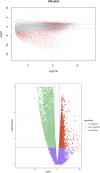

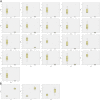
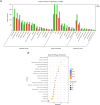

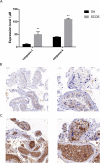

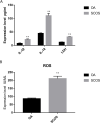
Similar articles
-
HnRNPL as a key factor in spermatogenesis: Lesson from functional proteomic studies of azoospermia patients with sertoli cell only syndrome.J Proteomics. 2012 Jun 6;75(10):2879-91. doi: 10.1016/j.jprot.2011.12.040. Epub 2012 Jan 10. J Proteomics. 2012. PMID: 22245417
-
Micro-proteomics reveals distinct protein profiles and SPARC/FGF2/CDH1 regulation of human Sertoli cells between Sertoli cell-only syndrome and normal men.Cell Mol Life Sci. 2025 Apr 7;82(1):146. doi: 10.1007/s00018-025-05678-w. Cell Mol Life Sci. 2025. PMID: 40192810 Free PMC article.
-
Identification of a novel pyroptosis-related gene signature in human spermatogenic dysfunction.J Assist Reprod Genet. 2023 Sep;40(9):2251-2266. doi: 10.1007/s10815-023-02892-y. Epub 2023 Aug 9. J Assist Reprod Genet. 2023. PMID: 37553495 Free PMC article.
-
Sertoli cell-only syndrome: advances, challenges, and perspectives in genetics and mechanisms.Cell Mol Life Sci. 2023 Feb 23;80(3):67. doi: 10.1007/s00018-023-04723-w. Cell Mol Life Sci. 2023. PMID: 36814036 Free PMC article. Review.
-
Sertoli cell-only syndrome: etiology and clinical management.J Assist Reprod Genet. 2021 Mar;38(3):559-572. doi: 10.1007/s10815-021-02063-x. Epub 2021 Jan 11. J Assist Reprod Genet. 2021. PMID: 33428073 Free PMC article. Review.
Cited by
-
CCR5 + T cells as a potential biomarker for primary Sjögren's disease based on bioinformatics analysis.Clin Rheumatol. 2025 Jun;44(6):2387-2401. doi: 10.1007/s10067-025-07460-6. Epub 2025 Apr 28. Clin Rheumatol. 2025. PMID: 40293619
-
MALDI Imaging Mass Spectrometry Reveals Lipid Alterations in Physiological and Sertoli Cell-Only Syndrome Human Testicular Tissue Sections.Int J Mol Sci. 2024 Jul 31;25(15):8358. doi: 10.3390/ijms25158358. Int J Mol Sci. 2024. PMID: 39125928 Free PMC article.
-
Interplay of Ferroptosis, Cuproptosis, Autophagy and Pyroptosis in Male Infertility: Molecular Crossroads and Therapeutic Opportunities.Int J Mol Sci. 2025 Apr 8;26(8):3496. doi: 10.3390/ijms26083496. Int J Mol Sci. 2025. PMID: 40331931 Free PMC article. Review.
-
Oxidative Stress Biomarkers in Male Infertility: Established Methodologies and Future Perspectives.Genes (Basel). 2024 Apr 25;15(5):539. doi: 10.3390/genes15050539. Genes (Basel). 2024. PMID: 38790168 Free PMC article. Review.
References
-
- Niederberger C. Re: common variants in mismatch repair genes associated with increased risk of sperm DNA damage and male infertility. J Urol. 2013;189(1):255. - PubMed
-
- Ma M, Yang S, Zhang Z, Li P, Gong Y, Liu L, Zhu Y, Tian R, Liu Y, Wang X, Liu F, He L, Liu Y, Yang H, Li Z, He Z. Sertoli cells from non-obstructive azoospermia and obstructive azoospermia patients show distinct morphology, Raman spectrum and biochemical phenotype. Hum Reprod. 2013;28(7):1863–1873. doi: 10.1093/humrep/det068. - DOI - PubMed
MeSH terms
Substances
LinkOut - more resources
Full Text Sources
Miscellaneous

